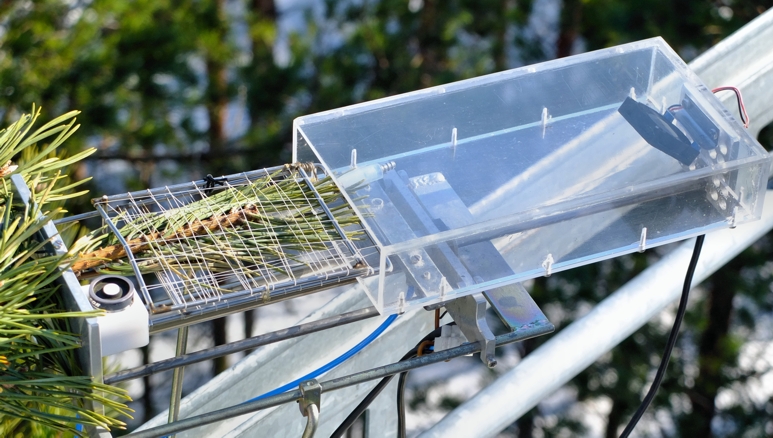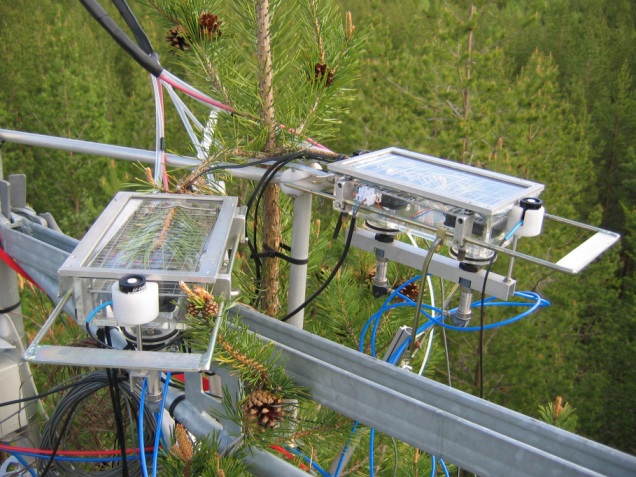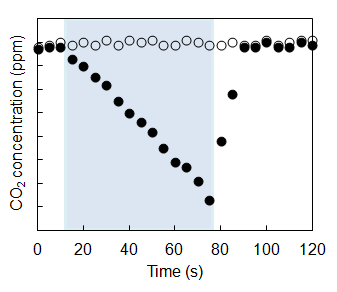There are plenty of methods available to measure photosynthesis. The method we use is actually a measurement of the carbon dioxide catch: We enclose a small part of the tree inside a chamber and follow the change of CO2 concentration in the air of this chamber. If the plant is taking in CO2, the concentration will decrease and if it is mostly releasing CO2 then the concentration will increase. From the difference in concentration in a given time, we can calculate the rate of CO2 exchange between the plant and the air.
The measurement principle is actually very simple, and therefore chambers are very broadly in use in the ecosystem gas exchange studies. There are many types of chambers depending on the measured plant growth, conditions of measurement, as well as the required measurement frequency. We want to follow the carbon dioxide exchange of the Carbon Tree frequently throughout the year. Since the tree is 17 m high, in the middle of the forest, and the wintery conditions can be harsh, the task is fairly challenging even the measuring principle is simple.
We use an automatic system that works with minimal assistance. The chambers are transparent and ventilated and their environment is not controlled, so that the conditions inside follow the natural daily and seasonal changes of light, temperature and air humidity, for example. The chambers open and close automatically. When it is closed, we follow the change of CO2 concentration and make the calculation of the CO2 exchange rate.
The black dots in the figure show the development of the CO2 concentration inside a measuring chamber with a pine shoot. The chamber closure time is marked with light blue colour. In this case, the shoot is active (summer daytime) and the concentration decreases when the chamber is closed because there is a lot of CO2 going inside the shoots and used in photosynthesis. As a comparison, the white dots show the concentration in a chamber that is empty; in this case nothing happens to the CO2.


